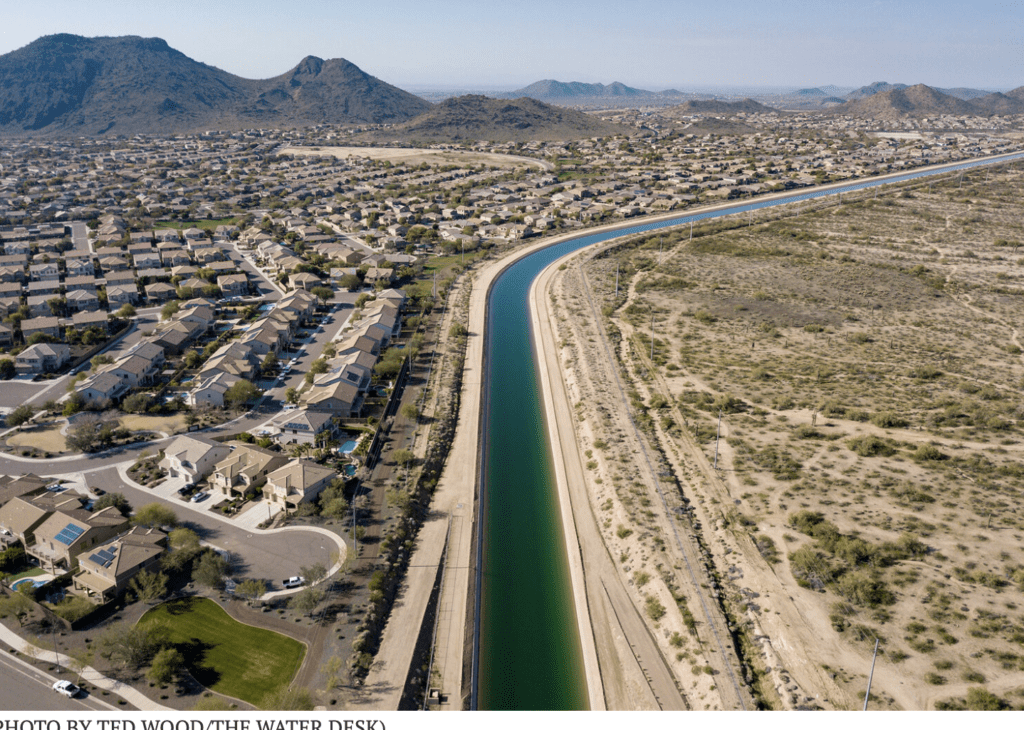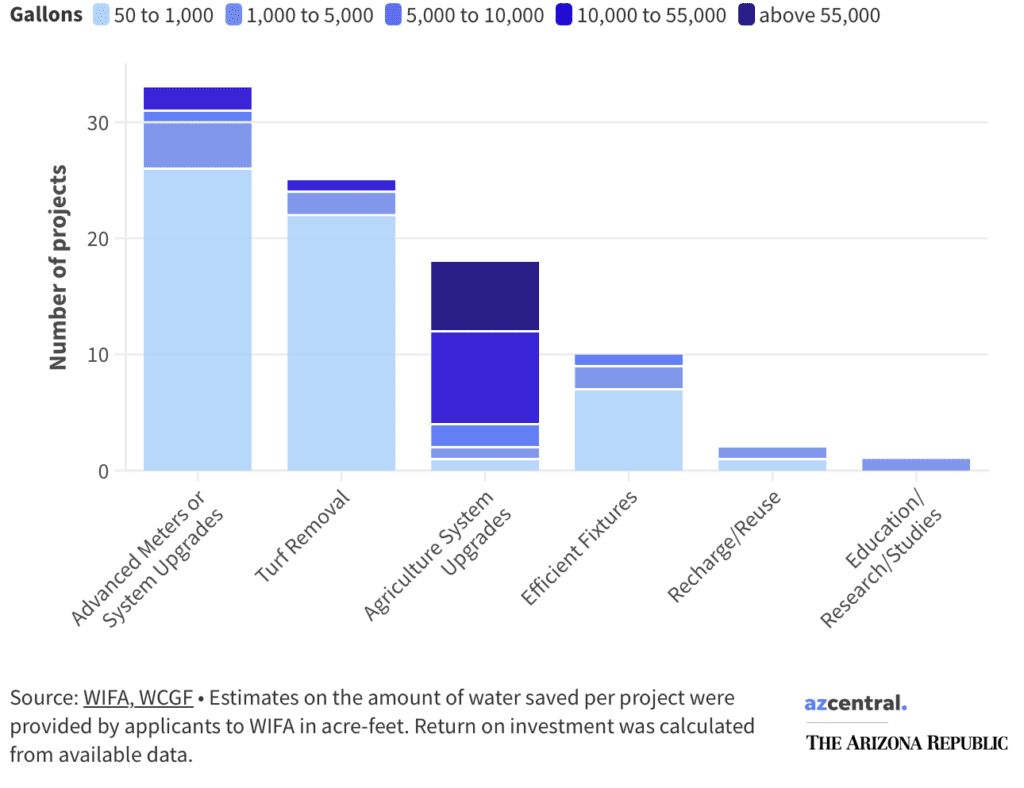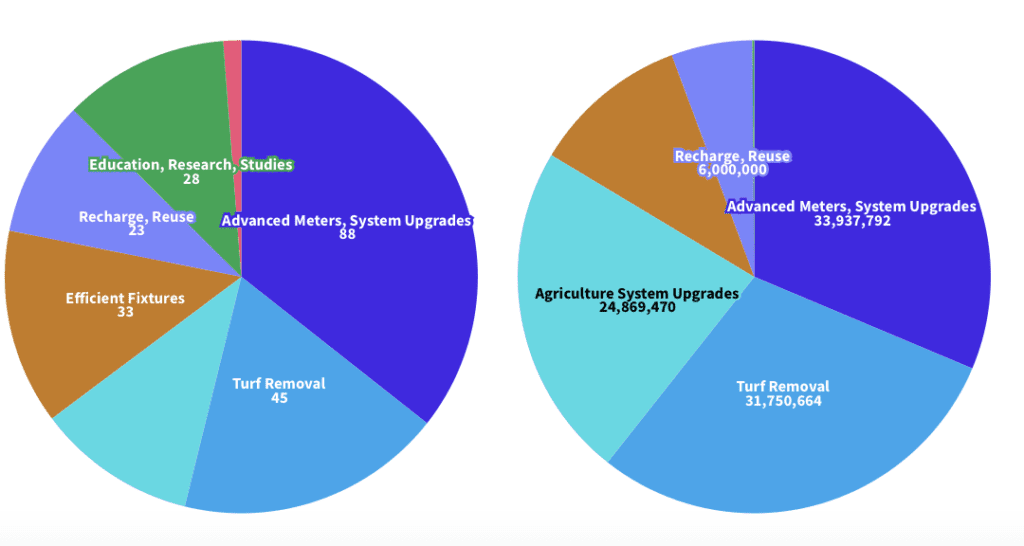Daniel Salzler No. 1237 EnviroInsight.org Two Items January 19, 2023
—————Feel Free To Pass This Along To Others——————
If your watershed is doing something you would like others to know about, or you know
of something others can benefit from, let me know and I will place it in this Information .
If you want to be removed from the distribution list, please let me know.
Please note that all meetings listed are open.
Enhance your viewing by downloading the pdf file to view photos, etc.
The attached is all about improving life in the watershed through knowledge.
If you want to be removed from the distribution list,
please let me know. Please note that all meetings listed are open.
Check our website at EnviroInsight.org
- Arizona Budget Squeeze Wrings Funds From Multi-Billion Dollar Water Project

Former Gov. Doug Ducey’s multi-billion dollar plan for a desalination plant or other project to add to Arizona’s imperiled water supply is still alive and has the support of his successor despite a budget crunch.
But Democratic Gov. Katie Hobbs’ budget proposal, released Friday, cuts this year’s promised $333 million deposit in the planned $1 billion fund designed to jump-start the plan to just $33 million. And that follows a nearly 50% cut last year, leaving the agency tapped to create the project with only half the money Ducey and lawmakers promised two years ago.
That’s despite Hobbs saying at midweek that the state entity that Ducey and the Legislature expanded to help finance the hoped-for water augmentation projects with private firms is “still alive and well.”
The director of the Water Infrastructure Finance Authority, a former Ducey staffer who also worked on water issues for former U.S. Sen. Jeff Flake, told a state House committee last week that a deal to construct the plant – or some other facility to bring more water to Arizona – could be finalized by the end of the year.
It has accepted dozens of basic project proposals in addition to the desalination plant backed by an Israeli firm that Ducey championed. And it expects to put out a call for formal project plans by the middle of this year and review them with an eye on its independent board picking one or more by December.
The agency commonly called WIFA was recast in 2022 and charged with identifying and helping find ways to bring new water to Arizona, along with boosting conservation and its traditional job of helping finance water infrastructure projects.
Ducey championed the desalination plan on the Sea of Cortez in Mexico, with the water being pumped north to Arizona and had hoped to have a deal inked before he left office in January 2023.
But that ran into issues at the WIFA board and some lawmakers who expressed concern about a deal with the Israeli firm and the lack of transparency. In the end, the board agreed to continue talking to IDE Technologies, but not exclusively.
The plant could cost between $5 and $10 billion and be built with private funds, and while still in the running, WIFA’s board opened the process to any project that could boost Arizona’s water supply from outside the state.
The state cash could help a private firm secure financing for the project, either directly or by guaranteeing that water it produces would be purchased by Arizona water users. Customers would ultimately end up paying for the higher-priced water through higher rates.
But after the initial $333 million payment was put in the agency’s new “water augmentation” fund in the fiscal year 2023 budget, lawmakers trimmed that amount by $144 million in the current year’s budget.
The rest of the money was redirected to other more immediate water infrastructure projects, including drilling new water wells in the metro Phoenix suburbs of Gilbert and Peoria, reconstructing a vital flood-control levee on the Little Colorado River in northeastern Arizona’s Navajo County and building a water recharge basin on northwest Arizona’s Mohave County.
WIFA Director Chuck Podolak wants that money restored in the next budget, along with the additional $333 million needed to bring the account up to the promised $1 billion. He said cutting future funding will hurt Arizona’s ability to draw private partners who will actually come up with the more than $5 billion needed to build the plant or some other water source.
“A project this size cannot be done solely by the state,” he told the House committee that focuses on water issues on Tuesday.
“We rely on outside partners,” Podolak said. “WIFA’s doing everything we can to be a good partner, to show that we’re being serious, to show that when we go out and enter into partnerships to bring us new water that we will make good on that. And we’re hoping that the state stands behind us on that.”
Podolak acknowledged that there’s controversy and opposition to plans to bring new water into the state, or “make the pipe bigger” as he put it. He says he’s questioned regularly about why the state doesn’t focus on conservation or reclaiming water from sewage treatment plants or other cheaper ways to boost the state’s supply.
“But when you talk to water providers, the water users, the water utilities, who are responsibility for delivering water every day, every hour for decades and centuries, it is clear we need to find new supplies and bring new supplies to the state,” he said.
Christian Slater, Hobbs’ spokesman, told reporters after the budget’s release that WIFA has $500 million in the bank and she will continue to evaluate its needs as they develop.
“Obviously, securing our water future is a top priority for the governor,” he said. “So, that’s something that we’ll certainly continue to prioritize.”
Rep. David Livingston, a Peoria Republican who chairs the House Appropriations Committee, says the $333 million deposit remains in his chamber’s budget package, but it’s likely to drop.
“It’s starting there, but I doubt it will end there,” Livingston said.
He agreed with Hobbs that WIFA is doing good things, including handing out state money for boosting water conservation.
“But finding new water sources? Maybe that was asking for it to do too much,” Livingston said.
Andy Tobin, a former House speaker who ran Ducey’s department of administration and is on the WIFA board, said he opposed asking for the nearly $500 million Podolak and the rest of the board ask for in this year’s budget.
“I said it looks like we’re not paying attention at all to the budget issues that they have at the Legislature and those people are looking to solve problems right now,” he told Capitol Media Services. “And if we’re not ready to use the funds, I was opposed to them asking for half a billion dollars.”
All that leaves WIFA far short of the billion dollars Ducey and lawmakers planned to give it, but still charged with locating a big new supply of water.
2. How Did A State Board Spend $100 Million In Water Conservation Grant Money? Clara Migoya Arizona Republic
Arizona’s Water Infrastructure Finance Authority has awarded over $100 million to water conservation programs and projects across the state, financing everything from the replacement of turf for artificial grass in a school’s athletic fields to lining of miles of agricultural canals with concrete.
A total of 89 projects and programs in all 15 counties received some funding. WIFA must assign the other half of the $200 million Water Conservation Grant Fund by June 2024.
The grant fund helped pay for a wide arrange of projects in different water-using sectors.
All public entities, as well as nonprofits partnering with public entities, were eligible to apply for state grants of $250,000 per project or $3,000,000 per program if they brought a 25% match for its full cost. Water providers, including tribal entities and private companies, were also eligible.
Proposals to install advanced water meters or do system upgrades were the most abundant and received the most funding last year. The greatest water savings and bang for the buck came from agricultural system upgrades.
But all sectors have the potential to save more water. WIFA staff and board members said they want to fund a variety of strategies across Arizona communities, beyond the return on investment a project can have.
“Arizona is at a crossroads; the urgency of our water situation means that every drop counts,” said Sam Draper, one of the seven volunteer committee members helping review and select projects for the water conservation grant fund.
“We need to take an all-of-the-above approach, conservation being a key consideration.”
Where was the first half spent?
WIFA, an independent state authority, received a total of 273 applications from April to November 202
The grant fund committee evaluated about 100 of the received proposals and sent recommendations to the WIFA board on whether to approve, reject or postpone decisions on applications. The remaining applications will be reviewed and selected this year.
WIFA staff sorted applications in seven different categories: advanced meters or system upgrades, efficient fixtures, water recharge or reuse projects, agricultural system upgrades, turf removal, research and education initiatives, and vegetation management for watershed restoration.
They received the largest number of applications from projects that involved the installation or upgrade of smart water meters, or an improvement in water system efficiencies. These types of proposals also received the most grants.

How much water awarded projects can save per dollar spent
Of the 18 agriculture system upgrades projects, six have the potential to save over 55,000 gallons
By statute, there is no set criteria for awarding the grants.
The only requirement is that at least a third of the funds go to conservation projects that address Colorado River water shortages, and a third deal with groundwater replenishment.
Committee members take into consideration the water source the applicant depends on, the volume of water the project or program could save, and at what cost, as well as co-benefits beyond water conservation.
Weighing the applications on an individual basis allows the committee and the board to focus on more qualitative aspects, beyond a return on investment, said Draper.
“You can’t put a price per acre-foot saved on helping a small community in rural Arizona or on the system reliability that a project could create,” she added.\
\
Applicants could submit requests for funding for the same technology or system upgrades, but the conditions in which those systems operate and the benefits financing could have are unique.
Biggest bang for the buck
Applicants sent WIFA their estimates on the minimum and maximum amount of water their project or program could save. Matched with the amount of funding requested, the biggest return on investment came from agriculture.
Construction projects to upgrade old infrastructure, line eroding earthen canals with concrete, or efforts to install N-Drip irrigation systems ranged anywhere from 500 to 79,000 gallons of water saved per dollar awarded.
Projects involving advanced water meters and system upgrades had a wide range of return on investment.
Category of awarded water projects
In 2023 WIFA’s Water Conservation Grant Fund awarded over $100 M to 89 projects and programs across Arizona.
Number of proposals received Total funds awarded

It’s harder to estimate the return on investment of research and education projects, or conservation efforts taking place at a landscape level.
Vegetation management and watershed restoration “is not something that has received a ton of excitement from the board and the committee,” said Draper, who is also Audubon Southwest’s policy manager in Arizona “They are costly projects with a lot of work to undertake.”
Some on the board have questioned whether it is a right investment for the fund. Because it is limited, WIFA will be forced to prioritize some projects over others for the grants.
“Arizona wins at the end,” said Draper about the selection and award process. “We have this amazing opportunity to save water through conservation and get it done now.”
Ag and water:Central Arizona farms rely on groundwater. How research aims to help farmers adapt, protect aquifers
Second and last round of awards
WIFA staff said they don’t expect to open more calls for applications.
“We have nearly $300 million in demand for $200 million in funds, so I think we will find that we have quality projects to take up the entirety of (the WCGF),” Chelsea McGuire, assistant director of external affairs for WIFA, told The Republic.
For the evaluation of the remaining applications, WIFA Chairman David Beckham requested a list of how much money each entity has been awarded from highest to lowest to help prioritize future awards and ensure that no one entity or geographic area dominates the process.
Board members said they want to ensure selection is fair to applicants that may be smaller or staffed at a lower level, making sure rural communities are not at a disadvantage.
Most applications related to education and research, as well as vegetation management and recharge projects, are pending evaluation, while other categories have been reviewed on a rolling basis.
“We’re really going to need to prioritize our money because we have a lot more in applications than we have in money,” Beckham said in December.
Water from thin air?Emerging technology offers one possible solution for rural Arizonans who need water
Challenges to spread out funding
From the beginning of the conservation grant fund, committee and WIFA board members said they wanted the funds to be spread out geographically.
But so far, over 40% of the funds awarded so far went to projects and programs within Maricopa County. About 30% of all applications sent to WIFA came from that county too. Applicants from Santa Cruz, Graham, Yuma, and La Paz counties were scarce. Only one water conservation project proposal came from Greenlee County. Only three tribal entities applied for funding.
If WIFA does not open another call for applications, committee members and the board would need to limit their selection to a less-diverse pool of applicants.
Copyright: 2021 EnviroInsight.org.
